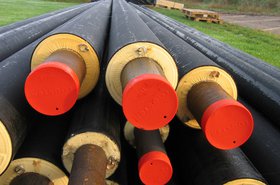In today's environmentally conscious world, governments worldwide are prioritizing carbon emission reduction as a critical objective. The UK, like many nations, has set ambitious net zero targets for 2050. A significant contributor to energy demand and greenhouse gas emissions in the UK is the heating and powering of buildings, accounting for 40 percent of energy demand and 30 percent of emissions, according to the Department for Energy Security & Net Zero.
The UK faces a unique challenge with a housing stock that is among the least energy-efficient in Europe. As the 2050 deadline looms and housing demand continues to grow, it’s become imperative for the nation to steer a definitive course toward decarbonized heating for over 30 million homes and businesses while promoting energy-efficient new construction.
Low carbon heating through heat network zones
The conventional approach of heating individual homes, businesses, and public buildings in isolation is no longer sufficient. It is essential to explore how our communities' buildings can work together collaboratively to reduce waste collectively. An effective strategy for achieving this goal is to expedite the establishment of heat network zones. These zones facilitate robust collaboration among local authorities, energy suppliers, power stations, recycling plants, and combined heat and power partners.
The UK government has taken commendable steps by introducing new building regulations mandating 31 percent fewer CO2 emissions for new constructions, and emphasising the adoption of low-carbon heating technologies like heat pumps. Meanwhile, retrofitting existing structures is also on the horizon, as indicated by the Home Decarbonization Skills Training competition: Phase 2. These efforts, combined with the launch of a heat network zoning pilot, signal a promising direction for the development of heat zone networks.
Unlocking the potential: data centers as an energy hub
A surprising yet central figure in this energy transformation is the data center provider, focusing specifically on harnessing the surplus heat generated during its operations. Data center operators can incorporate efficient heat exchange mechanisms into the design of new facilities, enabling the export of excess heat to neighboring communities. Retrofitting existing data centers is also possible, involving the connection of heat exchanger apparatus to the existing cooling system, including liquid cooling.
The excess heat can then be transported via an insulated underground pipeline network to a centralized water-to-water heat pump. These heat networks are particularly suitable for densely populated residential areas, such as London. At a conservative estimate, a single data center facility could recycle approximately five megawatts of excess heat, providing warmth to over 1,000 local apartments. With over 450 data center facilities dispersed across the UK, numerous communities stand to benefit from this innovative approach, leading to significant cost savings.
For an average heat recipient, this translates into fewer carbon emissions, with a single heat pump emitting less than 0.042kg of CO2 per kWh, compared to 0.263kg of CO2 per kWh for a domestic gas boiler.
A shared path towards a sustainable future
Data center operators also benefit directly from participating in district heating networks. By reducing their emissions, they can lower their carbon tax bills and reinvest these resources into enhancing energy efficiency to meet the ever-increasing customer demands.
It’s crucial to recognize that transforming the way we heat buildings in the UK and fostering the creation of heat zones is not a solitary endeavor, however. It requires a symbiotic partnership involving the government, energy providers, the construction industry, and data center providers, to name just a few.
Energy providers, for instance, play a pivotal role by investing in essential infrastructure, maintaining new systems, and incorporating remote monitoring and asset management. They also ensure that disaster recovery provisions, accreditations, and metering are in place to support the reliability of these critical systems. Only through collective efforts can data centers become reliable energy suppliers to our surrounding communities, contributing significantly to a sustainable and low-carbon future.





